Trading for Dummies in the Forex Market
The forex market also known as the foreign currency exchange is one of the largest financial trading markets in the world. Forex trading involves the investment in the currency of a country. Trading for dummies tells us that businesses as well as individual investors will do this. Multinational corporations who do business across nations may keep their cash reserves in a variety of countries. Individual investors have also realized the potential for profit that can be made when trading forex as well.
Trading for dummies in the forex market also tells us that the major cities that forex trading occurs include New York, London, and Tokyo and forex trades can be placed 24 hours a day. There are of course more active hours depending on the exchange and most trades take place during those hours. Typically when the European trading ends the American trading begins and then when the American trading ends, the Asian trading begins.
Trading for dummies provides a list of terms used in the forex world. They are described below.
Bid – to buy
Ask – to sell
Trading volume – the amount that is traded
Liquidity – the financial ease of transaction
OTC – over the counter (see also over the counter stocks)
Exchange rate – the difference between the value of one countries currency and another’s
Bid/ask spread – the difference between the proposed buying price and the actual selling price.
Central bank – the national bank of a nation that typically exerts control over the value of that currency.
Hedge funds – large mutual fund companies that determine the value of a currency through speculation and that control large amounts of money.
Also, it is interesting to note that most actively traded currency is the U.S. dollar that is about 90% of all trades! Next is the Euro, followed by the Japanese yen and the British pound.
Trading for dummies in the currency market also tells us the most commonly traded currencies. These include the U.S. dollar, the British pound sterling, the Australian dollar, the European Euro, and the Japanese yen, among some others. This market contains many small forex markets that specialize in trading various foreign currencies and the values depend on that market in which the investor is speculating. As a result there is not unified rate, but rather multiple rates that vary depending on where the trade occurs.
There is a lot more to trading currency and it is a great way to make money. Continue to study trading for dummies in the forex market and learn to find out if forex currency trading is an option for you.
Market Direction
Many investors think investing is difficult. This is a function of the so-called professionals creating that impression. It is not difficult for them to do so because most investment advisors know little about how to predict the direction of markets. They get their training in developing a safe and balanced portfolio that will not devastate an investor’s estate. Their investment philosophy incorporates the simple investment process of buying a quality company and holding it for the long term. Over an extensive long run, this investment program has worked. But it has worked for everybody!!! Why would you need a professional money manager to put you into a situation that is going to work no matter what. What is the risk of a long-term investing program? If your investment advisor recommends buying XYZ because it has good fundamentals and good management, it should be expected to go up over time. That is one advisors/analytical team’s research prognosis. What is the risk? The position not going up or even going down while you’re holding it for an extensive period of time. You have lost money and the opportunity to make money with those funds.
Why does candlestick analysis eliminate risk? The signals and patterns demonstrate what investor sentiment is doing right now. You do not have to wait an extensive long period of time to see whether a stock price is going to go up. The signals demonstrate there is a high probability that price should be moving immediately. Investing should not be complicated. Investing for dummies implies there is a simple way to make money as well as a much more sophisticated method to make money. The truth is that investing should be kept as simple as possible. Will Rogers had a very simple investment philosophy. “Buy stocks that are going up. If they don’t go up, don’t buy them.” Obviously this brings a chuckle. But in reality, candlestick analysis is as close to that philosophy as possible. What stocks do we want to be buying today? The stocks that show good indications they are going up. Not stocks that might go up next month or next year, the stocks that have candlestick signals that illustrate investor sentiment is turning positive now.
If you are concerned that investing is too complicated for you, don’t be! Candlestick analysis is merely a simple graphic depiction of what is occurring in investor sentiment. Candlestick analysis is implemented with common sense assessments. The information built into candlestick signals can be easily interpreted by the beginning investor as well as the seasoned trader. Investors lose money mainly due to emotional decision-making. The simple rules of candlestick’s dramatically reduces that investor flaw. As can be seen in this uptrend since early March, there have been many time frames of indecisive trading, two days up, two days down. This past week has been one day off followed by one day down. This could make an investor awfully nervous, closing out positions when they shouldn’t or establishing long positions when they shouldn’t. There is one factor that can be observed during this uptrend. The sellers could not produce a candlestick sell signal confirmed with a close below the tee line. Knowing that simple rule for candlestick investing allows an investor to sit much more comfortably with positions without getting whipsawed.
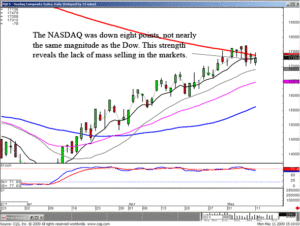
NASDAQ
The uptrend is still in progress. The longer the uptrend remains in progress, the more investor confidence will build up. Currently there is not a sell signal. With the trend remaining above the tee line, it can be comfortably assumed the uptrend is still in progress. That provides the opportunity to take advantage of high profit patterns that are developing. You do not have to understand how to analyze a corporate balance sheet, how crude oil prices, gold prices, interest rates, or the US dollar may affect the stock market. You do not have to understand what the TARP money will do to the banking industry. All the analysis that has been done by full-time analysts can be seen in the results of the candlestick singles and formations. Candlestick analysis is the study of what everybody else has decided from their research. Do not make investing difficult. Learn how to take advantage of the knowledge built into the signals.
The longer the uptrend continues, the more profits are being made coming out of patterns. The Fry Pan Bottom pattern has produced numerous big profit trades, 40%, 60%, 80% and greater profits. The J-hook pattern has created huge gains during the slow study of trends in the market. The advantage of trading the patterns is the expected results. A pattern will produce a price move inordinately stronger than the trends of the market. As witnessed in the FITB chart, a breakout from a Fry Pan Bottom pattern started producing a big price move exactly when expected.
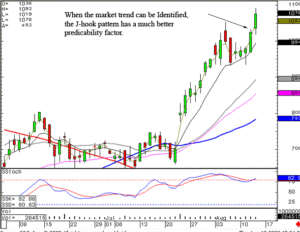
FITB
Option traders
The same scenario for option trading is just as pertinent as investing itself. It should not be difficult. The Candlestick Forum will be providing an Option Trading program in the next few weeks. You will not have to learn about the Condor, Delta, beta, horizontal spreads, or many other terms that are applied to option trading. Trading options should be a process just like investing, keep it as simple as possible. Huge profits can be made when you know how to apply the correct trade strategy to the correct price move. Investing becomes much easier when you have a simple format to follow. If you already know what to expect from a trade, the emotional decision-making process is completely eliminated. If you do not know the 12 major signals and the High Profit Patterns, please take the time to learn them over the next few weeks. Implementing option strategies using the signals and the patterns is merely putting the probabilities in your favor and leveraging the potential profits. Take advantage of this week’s specials on the 12 major signals and the High Profit candlestick patterns.Click here for details.
Timing is a very important element for successful stock trading. It is even more important when it comes to option trading. Because the candlestick signals and patterns have expected results, the timing of trades is much better refined. Correct anticipation provides a much better profit tool when knowing the expected results. As seen in the FITB chart, the Fry Pan Bottom breakout at the five dollar area would have led to a profitable stock trade. However, the percentage gain would have been greatly multiplied through an option trade. This is not rocket science. This is merely taking advantage of the information has worked consistently through the centuries when applying candlestick analysis to trading.
Members Chat Session tonight at 8 PM ET.
Good investing,
The Candlestick Forum Team
Website special reflects current newsletter. If you are reading an archived newsletter you will be directed to Current Website Special.

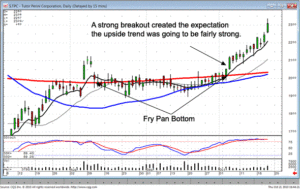
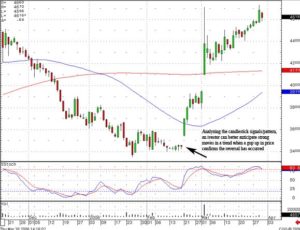



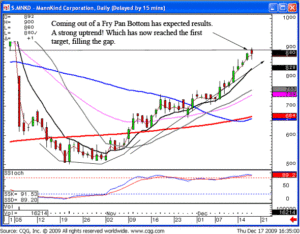
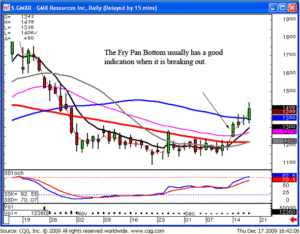
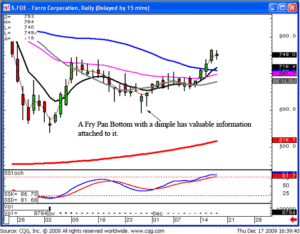
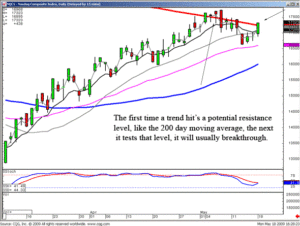
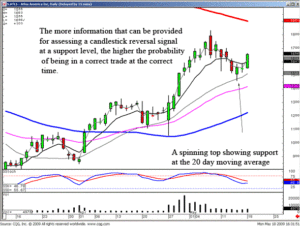
 This Week’s Special
This Week’s Special

